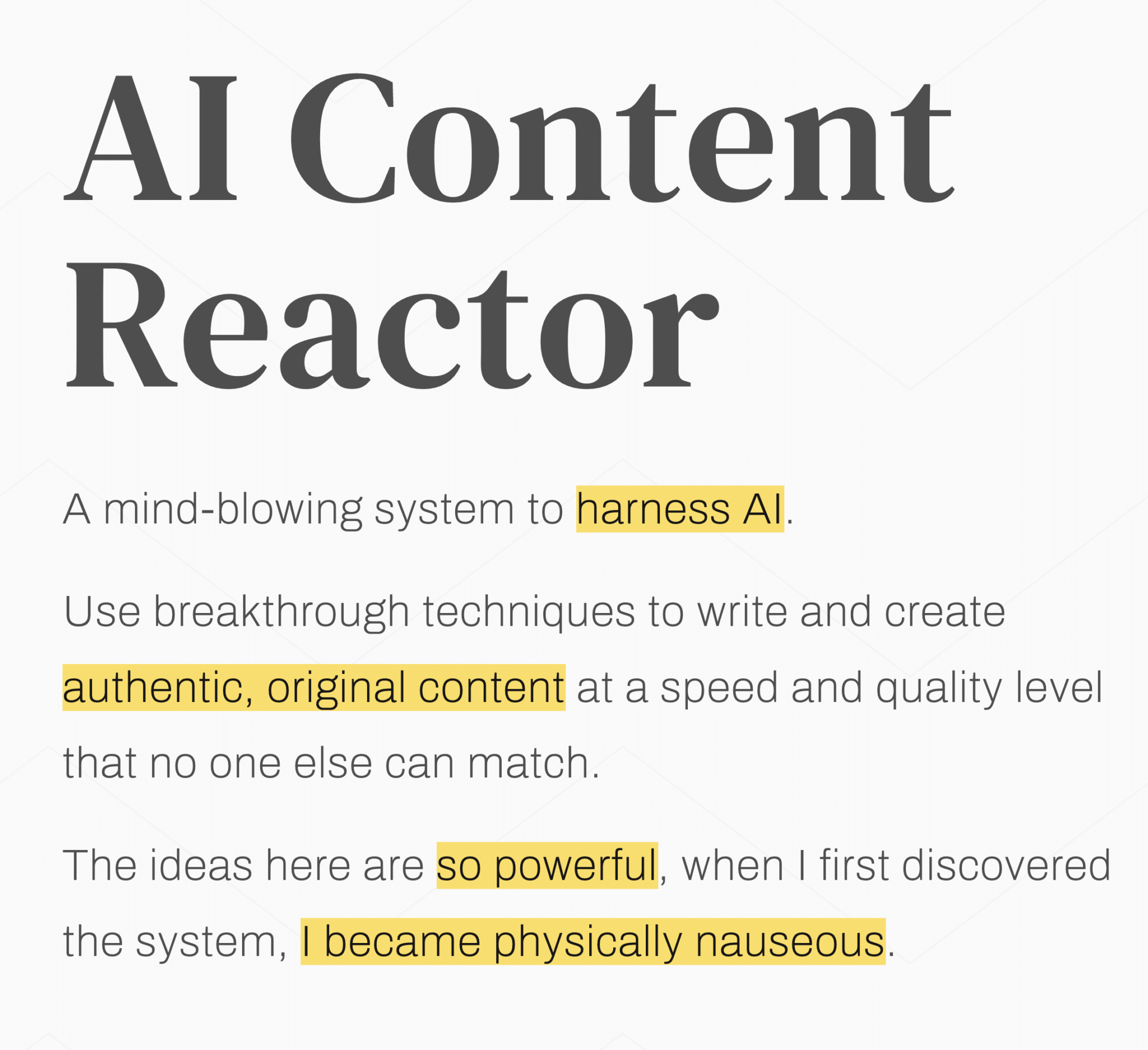We’re buried in the Internet day in and day out. Being surrounded by the very things we talk about, it’s hard to remember sometimes that some people don’t have so much as the basics. Today, we’re going to walk you through one of the foundations of traffic building – a company blog. From the concept to the reality, here’s a step-by-step process to creating a company blog for traffic generation.
Blog Conceptualizing Stage
It’s easy to say, “I want to start a blog”. Without taking time for the conceptualizing, however, you’ll end up with just another blogging graveyard. As with anything else in business, it takes planning.
#1: Decide how often you can afford to write blog posts.
Tip: Be realistic. We strongly caution our clients on the number of blog posts they plan to write per month. Many companies – especially SMBs – don’t have the resources to write every day, even if they wanted to. Our rule of thumb is to start conservatively. You can always add in an extra post here and there; what you don’t want to do is miss a planned post.
#2: Create an information schema / content layout.
An information schema is simply a layout of your blog’s information structure. How will you provide this information to your readers? What drop downs will you have, if any? What categories will you have?
Tip: When it seems that you have too many categories, make sure some of the categories can’t be combined under a more general one. For more information and help about creating your blog’s information schema, read: Information Architecture: Content Layout is Everything.
#3: Choose a design that supports your business niche.
For example, if you have a portfolio and want to use your company blog as a way to showcase that portfolio, some designs will support this better than others. The same for showcasing specific products, photographs and so on.
Tip: Spend time searching through free WordPress themes before contacting a designer (we’re strong supporters of WordPress as a blog or site platform). The slowest part of starting a blog is the designing stage; if you come to the designer with something tangible that can be modified to fit your needs and brand, it’ll go a lot faster and smoother.
Blog Creation Stage
You’ve followed steps one through three, and now it’s time to start blogging, right? Wrong. It still has to be built. If you already have a business website and you simply plan to add a blog, you can move on to step 6. For everyone else, read on.
Step #4: Choose an appropriate domain name.
Your domain name is your URL, like http://example.com.
Tip: Make it easy to remember. People often try to stuff their domain name full of keywords. That’s all fine and dandy, but you want to make sure people will remember it enough to type it in.
Step #5: Choose your hosting provider.
Hosting providers are the landlords of the Internet. They have the online homes, and you have to rent them.
Tip: Do your research! There are some reputable hosting providers. However, this is one of the niches that call to scam artists and con men. If you can, get a referral from someone you trust. If you can’t, research, research, research!
Step #6: Give your web developer access to your servers to upload your fresh new blog platform and design.
This isn’t a difficult process but, if your hosting provider doesn’t have a one-click install process, you need to know what you’re doing.
Tip: Many hosting providers allow you to set up a login for website administrators. If you don’t want your web developer to have your account information, you can either:
a) set up an account for them to access you site or
b) call the hosting provider’s customer service and ask them to do it for you
Step #7: Walk through the finished blog setup.
Before you go live, you want to make sure everything looks good – no errors, no issues.
Checklist:
- All links are working.
- All images are visible.
- The design isn’t skewed in any way.
- The blog looks the same across a wide variety of browsers. Tip: you can use Browser Shots for this.
- Your social network links are immediately visible.
Step #8: Make sure you know how to use the platform.
Tip: Your web developer should be able to give you a short training session on how to use the platform.
Step #9: Write your first blog.
Tip: Introduce yourself to your incoming audience. What will the blog be about? What kind of things do you plan on sharing? Make sure they know your blog is always a work in progress (every blog is).
Step #10: Publish your first blog.
With WordPress, this is as simple as copy/pasting the content from a Word document to the WordPress editor and pushing Publish. If you followed these steps in order, you already know how to use your platform.
Step #11: Make your blog visible to the public.
This entire time, your blog should be set to be ignored by search engines. It’s now time to change this.
Step #12: Link your site to your blog and vice versa.
Don’t skip this step! If you’re getting traffic to your company site, you want to use your blog to keep bringing that traffic back. When you start getting traffic to the blog, you want that traffic to also go look at your site, where your products/services can be found.
A Few Last Tips
Remember that a blog – even a company blog – isn’t a sales platform. Sure, you can use it to showcase some of your products and services, but people visit a blog for information, not to buy things.
Keep your tone personable. You aren’t selling your services here; you’re introducing people to your company, your brand, and the people behind that brand. Talk to your readers; create conversations. Respond to them when they comment. In other words, think of your blog as your PR platform… because it is.
We hope this step-by-step walk through gets you started on your way towards many happy years of blogging. Last but not least, don’t force it to grow. A blog is a living platform; when nurtured and cared for, it’ll grow on its own.




































18 Responses
It’s definitely not easy creating blogs for businesses. Especially in hard industries that people don’t generally care to hear about while online reading articles. But in the long run your website becomes a hub of resourceful information if done right.
Creating a business blog is to determine the audience for the blog. For example, let us take a look at pet grooming blogs. One blog owner uses her blog to educate customers on why her in-home grooming service makes the most sense. Another blog owner uses her blog to sell grooming supplies to other groomers. Still, another blogger uses her blog to educate the general public on common dog grooming practices. The decision here will guide the rest of the process.
Hello Mark, I couldn’t agree with you more. It becomes difficult when readers, are bombarded by (using your example) pet grooming posts. The competition is fierce. That’s when I suggest, mixing it up. Ultimately you will not only gain readers out of interest, (stick to a weekly schedule) but out of desire to know more about your story, your business, your opinion. You see I personally think if you commit to writing a blog, (not just a few months) then you are building credibility, community, authority, and ultimately a voice, a story your readers will be interested in. Thanks for your input Mark, make 2012 magical!
Great tips ,Thanks for posting detailed steps about what we have to look into when making a blog
You’re welcome Mike 😉
These steps are so foundational! Creating and then following editorial calendar is important to long term success for a business blog. Whether they plan to post once a week, or 4 times a week, that consistently needs to be there so their readers know when to expect something new.
I’m going to have to tweet this one out! 🙂
Thanks Tim, we always appreciate the sharing function our readers use 😉 After all sharing is caring! Have a great weekend!
Sharing IS caring! Have a great weekend. Tweet ya soon. 🙂
Great stuff here. I wish i read this article a couple of months ago. This would have been my blueprint in my internet marketing strategies. I’m just curious how many post you should have in a week ideally. I know for a fact that Google loves fresh and unique content since the Google Panda update.
Hey Brian thanks for dropping by. How many (posts) depends on your objectives. I tell clients and friends to consider a minimum of 8 posts per month. ONLY (note I say ONLY) if you can do this religiously for 6 months. There are a few factors I’m considering when recommending this schedule. I will choose the top 5 reasons.
1. Your readers will become trained that every week you have 2 posts.
2. Will give the blog daily, weekly, monthly visibility. Especially when you consider some of the round-ups in your industry.
3. This will give you enough content to syndicate around the web. (Tumblr, Twitter, Facebook, G+)
4. Establishing authority, respect, & trust.
5. Getting to know your readers (future clients) Blogs are a great place to ask questions, comment, etc.
Again consider the commitment before taking this on. Another suggestion is to make sure you have a content schedule and most of all this is supposed to be fun, not stressful. I hope I’ve answered your question. 🙂
Some great points, a blog is a way to building your presence online, raising your voice, and getting others to know about you. On your business blog keep it real, consistence, and no hard selling, you will start to build your brand online, and if it’s your sales that your worries about they will start to tick in after a while, but the key is consistency.
Thanks Wasim, yes, consistency is a great word.
The most important thing to remember about creating a business blog is that it needs to remain active. You can’t just push it to the side when things get busy. All too many businesses start blogs with good intentions and then let it sit idle for months at a time. A visitor to your blog will be turned off by this as it looks unprofessional. Create and editorial calendar and stick to it. Blogging should be a priority.
You always leave great comments, Nick – We cringe seeing blogs with few responses to the readers, or those with two to three month posting gaps. A blog is like a child – you have to feed it for it (and the readership) to grow.
Thanks for your always good input!
Good Share!
I would advise any business out there with useful information to use a blog, this will generate leads, networks and improve your websites with SEO.
This indeed is in detail what you have shared – thanks .
These guide is the basic guidelines when making a blog. I also recommend WordPress for the platform. It is easy to maintain and you can easily master it and there are many available free web designs ready for your site if you are using WordPress.
Hello, Fernz – It’s amazing how the basics work so well, yet are often overlooked because they’re so obvious. It’s the obvious that slips a person’s mind, because they’re looking so hard to see if they’ve missed something, they miss something!
Creating a schema/content layout, understanding what their hosting provider can support… I can’t tell you how many clients we’ve spoken to who wanted to put the cart before the horse. Some didn’t even know there WAS a horse. Suffice it to say, sometimes the obvious escapes us all.